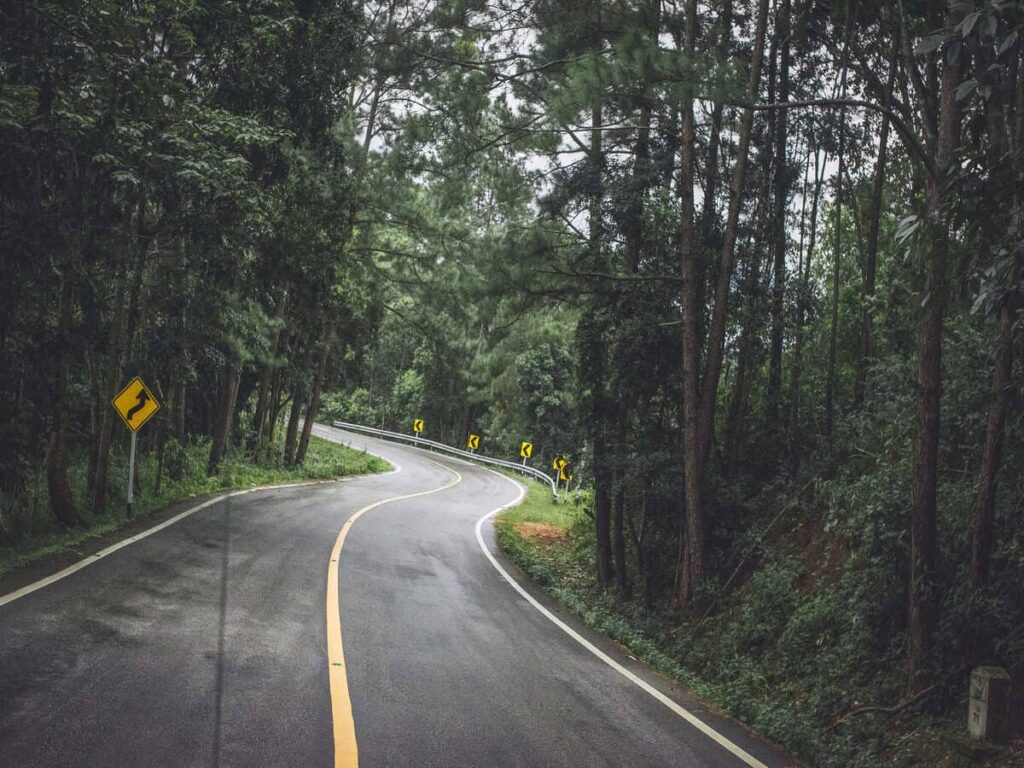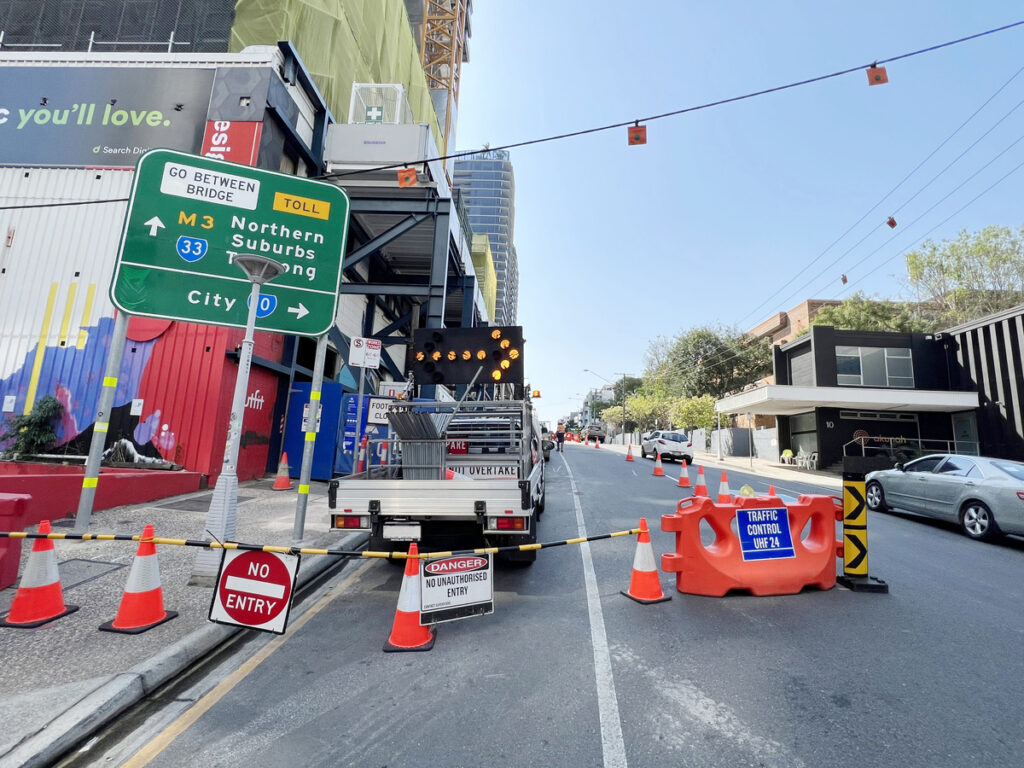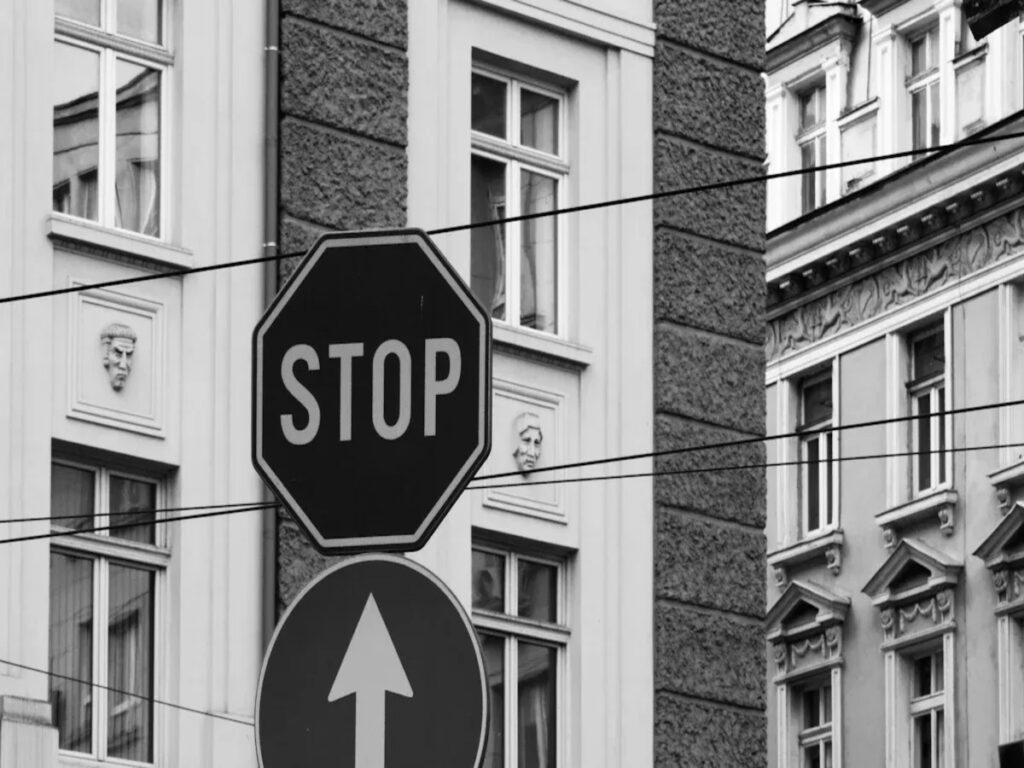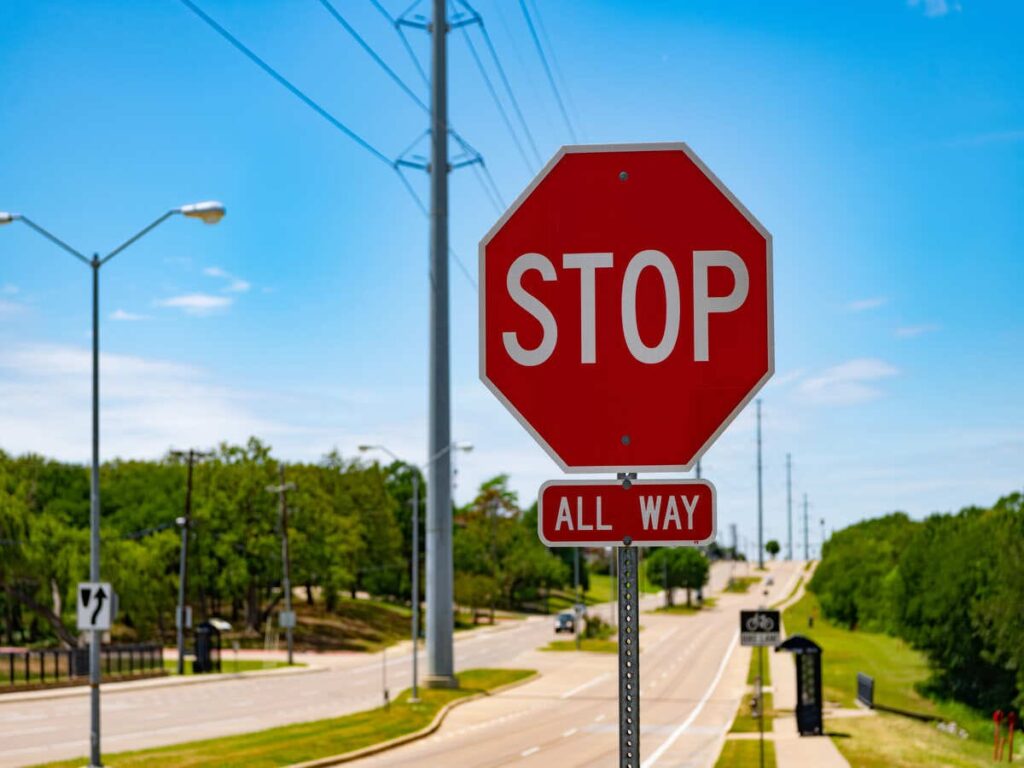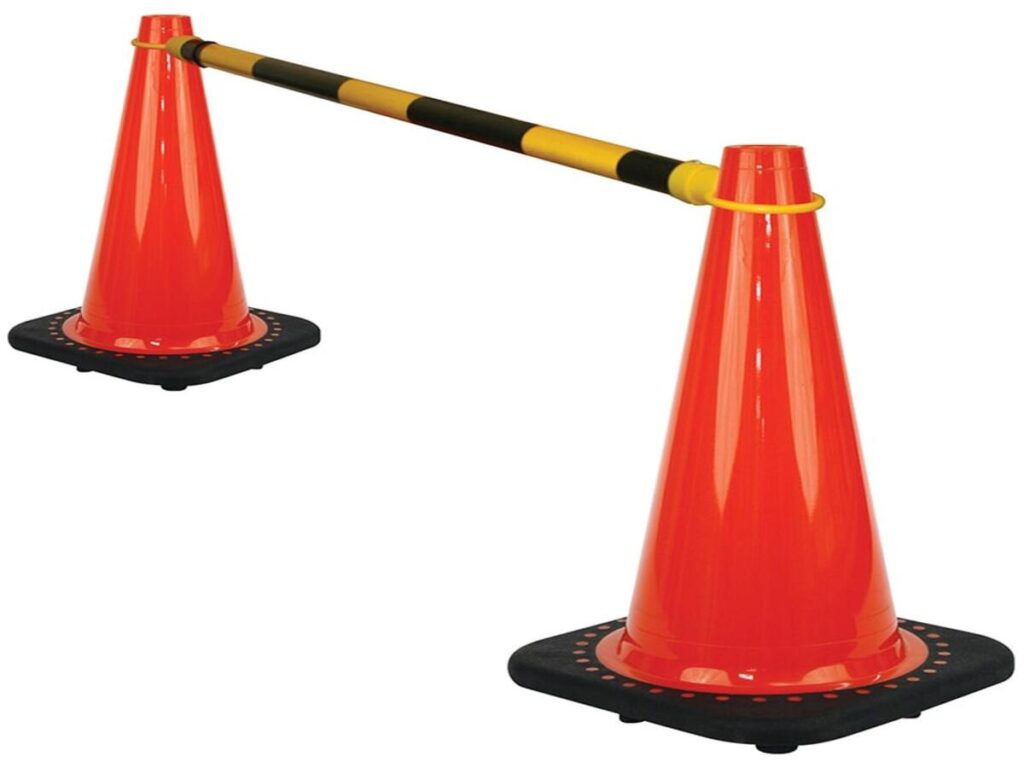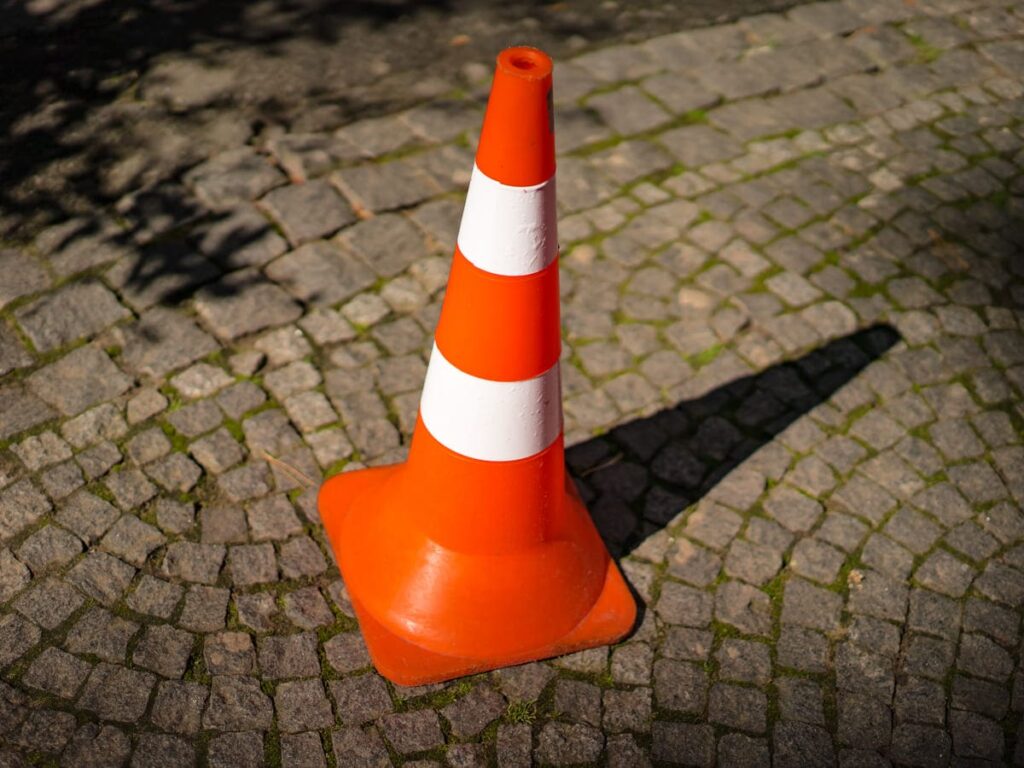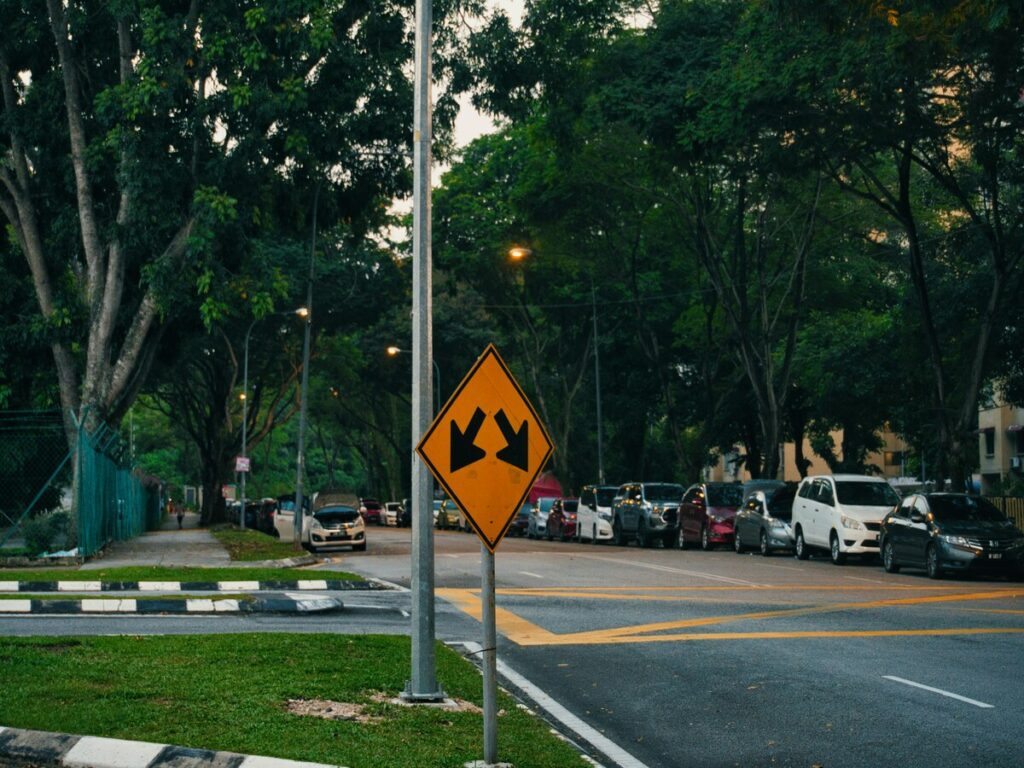
Choosing the best reflective materials for traffic signs involves balancing traffic signs cost and safety. Reflective road signs play a crucial role in keeping drivers safe, especially at night when crash rates are three times higher than during the day. Here are some key points to consider:
- Glass Bead Type reflective sheeting accounts for 53.9% of the market because it offers durability at a reasonable traffic signs cost.
- Only 40% of low-income countries have regulations for traffic signs, compared to 90% in high-income countries.
- Approximately 50% of traffic fatalities occur at night, despite lower traffic volumes.
When selecting materials for traffic signs, it’s important to weigh how your choice impacts both safety and traffic signs cost.
Key Takeaways
- High-quality reflective sheeting makes road signs brighter at night. This helps drivers see better and stay safe. It can lower the number of accidents.
- Diamond grade sheeting costs more at first. But it lasts longer and does not need to be replaced as often. This saves money over time.
- Cleaning and checking signs often keeps them bright and useful. This helps stop accidents and makes signs last longer.
- Think about local traffic, road type, and safety rules when choosing reflective sheeting. This helps you get the best mix of cost and performance.
- Having a clear plan and checking costs over time helps you spend money wisely. It also helps make roads safer with the right reflective materials.
What Is Reflective Sheeting?
Definition and Role
Reflective sheeting helps people see road signs better. You can also find it on safety vests and rail cars. Companies make reflective sheeting by mixing PET, PMMA, or PVC with glass beads or fluorescent powder. This mix lets the material bounce light in many ways. It helps signs show up when it is dark.
- Retroreflective sheeting uses special technology like microprisms or lenses. These send light back to where it came from. This helps drivers see signs at night.
- Reflective technology works because of specular reflection, diffuse reflection, and retroreflection. Retroreflection sends light right back to the driver. This makes signs look brighter.
- There are rules like ASTM D4956 that sort sheeting into types. These include Engineer Grade (Type I), High-Intensity Prismatic (Type III/IV), and Diamond Grade (Type V–XI). Each type has its own level of brightness and how long it lasts.
- Groups like the Federal Railroad Administration have rules for retroreflective sheeting. The rules make sure the colors and how well it works stay the same. This keeps people safe.
Note: ASTM International’s D4956 rule tells what retroreflective sheeting must do. It covers color, brightness, and how long it lasts. This helps every sign meet safety and visibility needs.
Impact on Visibility
Reflective sheeting is very important for seeing road signs. It helps most at night or when the weather is bad. Retroreflective sheeting makes signs brighter and easier to see from far away. Studies show that using this technology can make signs over 280% brighter at 225 meters. This gives drivers more time to notice signs and react.
A study by the Federal Highway Administration found something important. When STOP signs used better retroreflective sheeting, rear-end crashes at intersections dropped by 17.5%. This shows that better sheeting can lower accidents and make roads safer. Picking the right reflective sheeting helps keep everyone safe on the road.
Traffic Signs Cost Breakdown
Material Price Comparison
When you start a project, you need to know material prices. Different sheeting types change the traffic signs cost. The table below shows how costs compare:
| Cost Type | Budgeted Cost | Actual Cost | Total Variance | Quantity Variance | Price Variance |
|---|---|---|---|---|---|
| Direct Materials | $50 | $54 | $4 Unfavorable | $10 Unfavorable | $6 Favorable |
| Direct Labor | $40 | $36 | $4 Favorable | $2 Favorable | $2 Favorable |
| Variable Overhead | $30 | $32 | $2 Unfavorable | $4 Unfavorable | $2 Favorable |
| Fixed Overhead | $20 | $18 | $2 Favorable | N/A | N/A |
| Sales | $200 | $210 | $10 Favorable | $20 Favorable | $10 Unfavorable |
This table helps you see how material prices can change your budget. If reflective materials cost more than you thought, your traffic signs cost will rise. You can use this information to find where costs are different and make smarter choices.
Production and Installation
You should think about more than just sheeting price. Making and putting up signs also affects the total traffic signs cost. Here are some ways to watch and control these costs:
- Check cost reports for each order. These show real and planned costs for materials and labor.
- Use reports that split up materials in process, work in process, and indirect costs. This helps you know where your money goes during sign making.
- Look at variance reports. These show the difference between planned and real costs, so you can change your process if needed.
- Use trusted data like RSMeans Data. These tools give you city cost indexes, productivity rates, and contractor rates. They help you plan for installation costs.
By using these tools, you can keep your traffic signs project on track and avoid surprises.
Budgeting for Projects
Planning your budget for traffic signs is more than adding up sheeting prices. You should use a fixed budget based on past projects and what you expect to need. This helps you stick to your plan and control the traffic signs cost. When you compare what you spend to your budget, you can see if you spent more or less than planned. This is called variance analysis, and it helps you find ways to save money next time.
You can also try evidence-based budgeting and participatory budgeting. These use data and team feedback to make better choices. By following these steps, you set a clear path for your traffic signs project and use your resources wisely.
Retroreflective Sheeting Quality Factors
Durability and Lifespan
When picking retroreflective sheeting, you want it to last long. How long it lasts depends on how it is made and where you put it. Diamond grade and high-intensity prismatic sheeting both last for many years. These types do not fade fast and keep reflecting light well. Diamond grade works great on highways and busy roads. High-intensity prismatic sheeting is also strong for streets with lots of cars.
Retroreflective sheeting uses special technology to stay bright. Good materials and careful making help it last longer. You should pick products that follow rules like ASTM D4956. These rules check color, how much light it reflects, and how strong it is. Signs with good sheeting do not need to be replaced as often. This saves you money over time.
Maintenance Needs
Even the best sheeting needs to be cared for often. Dirt, rain, and snow can make signs less bright. You should clean signs often to keep them easy to see. Studies show that how you look at a sign matters more than where the light comes from. This means you must think about where you put signs and how you take care of them.
A study looked at over 500 signs and found they get less bright as they get older. The brand, color, and how you look at the sign all matter. You can use this to plan when to check and clean signs. Checking signs often helps you find ones that need cleaning or replacing before they are unsafe. If you do this, your signs will work better and last longer.
Tip: Clean your signs and check them often. This keeps them working well and helps stop accidents. It also keeps roads safer.
Weather and Environmental Resistance
Outdoor signs face many problems from weather and pollution. Chemicals and bad weather can hurt retroreflective sheeting. Makers test sheeting to see if it can handle scratching, heat, cold, and chemicals. Diamond grade and high-intensity prismatic sheeting are tested for sun, rain, snow, and salt spray. These tests make sure the sheeting stays bright and sticks well in tough weather.
- Sheeting must pass tests for scratching, bending, and folding in the cold.
- Fast aging tests show if it can handle heat and wet air.
- Tests for sticking and chemical safety show if it stays in place and does not get ruined by chemicals.
- Tests for hits and bending in the cold make sure it does not break or peel.
- Water and salt spray tests show it can handle wet and salty places.
- Cleaning tests show you can wash off dirt without hurting the sheeting.
- Rules like EN 1463 and ASTM D4956 say how tough and bright the sheeting must be.
Good retroreflective sheeting works well in all kinds of weather. It keeps signs bright and safe for a long time. If you buy good sheeting, you will not have to replace signs as often. This saves you money in the end.
Nighttime Visibility and Safety
Reflective Performance
Reflective sheeting helps road signs stand out at night. It makes signs brighter when headlights shine on them. This helps drivers see dangers and important information in the dark. The way reflective parts are placed can change how well you see them.
The table below shows how different setups help you see at night:
| Condition | Mean Detection Distance | Notes |
|---|---|---|
| Pedestrians in dark clothes | ~60 m | Drivers must slow down to avoid hitting them |
| Pedestrians with retroreflective straps (biological motion) | 165 m | You see them about three times farther than with a vest; always seen in no-glare |
| Pedestrians with retroreflective vest | ~55 m (estimated) | Not as good as straps that show movement |
| Implication | Retroreflective materials, especially arranged to show movement, greatly improve safety and visibility at night |
Using retroreflective straps that show movement gives you more time to react. This extra time can help keep roads safer at night.
Another study looked at pavement markings. Wider lines were easier to see, even if they were not very reflective. This means you can make roads safer at night by using wider markings or better reflective sheeting.
Accident Risk Reduction
Better reflective signs and markings help stop accidents. When you see signs sooner, you have more time to react. High reflectivity lets you spot dangers, curves, and crossings early. This is very important on fast roads or busy intersections.
Reflective sheeting that stays bright at night lowers the chance of missing warnings. Keeping signs clear and bright helps prevent crashes, even after years of use. Studies show that better nighttime visibility can lower accident rates and save lives. Good reflective materials help protect drivers, walkers, and bikers.
Tip: Pick reflective sheeting that stays bright for a long time. This keeps roads safe and signs easy to see at night, even in bad weather.
Long-Term Value Analysis
Lifecycle Cost
When picking reflective sheeting, do not just look at price. You should think about all the costs over the sign’s life. This is called lifecycle cost analysis. It adds up buying, putting up, cleaning, fixing, and taking down the sign.
Note: Lifecycle cost analysis (LCA) helps you not forget future costs. It also helps you not guess too low on repairs. LCA lets you compare different sheeting types in a fair way.
You can use special models that follow ISO rules. These models split costs into steps:
- List every cost, even small ones.
- Guess how much each cost will be over time.
- Change future costs to today’s value.
- Look at the results to pick the best option.
A table can help you see the differences:
| Cost Phase | Engineer Grade Sheeting | Diamond Grade Sheeting |
|---|---|---|
| Initial Purchase | Low | High |
| Maintenance | Medium | Low |
| Replacement | Frequent | Rare |
| Total Lifecycle | Higher over time | Lower over time |
Some cities, like San Diego, use lifecycle cost analysis to choose materials. They found better sheeting costs less to keep up and works better. Using this method helps you make a smart choice for your city.
Replacement Frequency
How often you replace signs affects your budget. Cheaper sheeting may seem like a good deal at first. But you will need to change it more often. This means more work, more time, and more money later. Good sheeting lasts longer, so you do not replace it as much.
- Changing signs a lot makes total costs go up.
- Sheeting that lasts longer makes less trash and keeps roads safer.
- Checking signs often helps you find ones to replace before they are unsafe.
Always think about how many times you will need to change each kind of sheeting. If you pick strong materials, you save money and keep signs easy to see for a long time.
Case Studies
You have many options when picking reflective materials for road signs. Real-life stories can show how these choices affect safety and cost.
1. Urban vs. Highway Signage Choices
Cities usually pick Engineer Grade reflective sheeting for streets in neighborhoods. This material works best where cars go slow and there are streetlights. You often see these signs near homes or schools. They give drivers enough visibility in safe areas.
Highways need something different. Cars move fast, and drivers have less time to see signs. Many groups use diamond grade retroreflective sheeting on highways. This material is brighter and lasts longer. Diamond grade signs are easy to see at night or in bad weather. Drivers can spot these signs from far away, even at busy or dangerous intersections. Using diamond grade on highways helps stop missed warnings and accidents.
2. Government Project: Investing in High-Quality Reflective Materials
A big city started a project to make roads safer. The city changed old signs to diamond grade and high-intensity reflective sheeting. Workers put these signs at main intersections and on busy roads. The new materials made signs easier to see, even after many years.
After the change, the city had fewer crashes at intersections. Workers also did not have to replace faded signs as much. Diamond grade sheeting stayed bright and lasted longer. This project proved that buying high-quality reflective materials saves money and keeps people safer.
Tip: If you pick diamond grade or high-intensity reflective sheeting for important places, you help keep drivers safe and save money in the long run.
Decision Guide
Picking the best reflective sheeting is not just about price. You need a plan to know when to buy better materials. Many transportation groups use special steps to help them choose. For example, the Atlanta Regional Commission gives scores for safety and crash rates. Washington State DOT checks crash history and how many cars use the road. Missouri looks for roads with certain problems and tries to fix them all at once.
You can use a plan like this too. First, look at where your signs will be. Busy roads, intersections, and places with lots of crashes need the brightest signs. Next, check the rules in your area. Some places say you must use certain grades for some roads. Always think about how many cars drive there and if there are dangers like sharp turns or dark spots.
Here is an easy checklist to help you pick the right sheeting:
| Step | Question to Ask | Why It Matters |
|---|---|---|
| 1 | Is the location high risk or high traffic? | Premium reflective sheeting improves safety where it counts most. |
| 2 | What are the local regulations? | Some rules require higher grades for certain roads. |
| 3 | How long do you need the sign to last? | Longer-lasting materials reduce replacement costs. |
| 4 | What is your maintenance budget? | High-quality reflective sheeting needs less upkeep. |
| 5 | Are there frequent crashes or poor visibility? | Better materials lower accident risks. |
Tip: Look at crash reports and traffic studies before you decide. This helps you pick the right sheeting for each place.
If you follow these steps, your signs will be safer and last longer. This means your money is spent well and your community stays safe.
When picking materials for traffic signs, you need to think about price and how well they work over time. Good reflective sheeting keeps people safer, mostly in important places. If you use lifecycle cost analysis and follow a simple guide, you can make better choices.
To learn more about selecting the best reflective materials for your traffic signs, check out our blog: How to Select the Best Reflective Materials for Traffic Signs.
FAQ
What is the main benefit of using high-quality reflective sheeting?
You get brighter signs that last longer. High-quality sheeting helps drivers see signs better at night and in bad weather. This can lower accident risks and reduce how often you need to replace signs.
How do I choose the right reflective sheeting for my project?
Start by looking at traffic volume and road type. Use premium sheeting for highways or busy roads. For local streets, standard grades may work. Always check local rules and safety needs before you decide.
Does better reflective sheeting save money over time?
Yes. You spend more at first, but you save on maintenance and replacements. High-quality sheeting stays bright longer, so you do not need to change signs as often. This lowers your total costs.
How often should I inspect and clean road signs?
Check your signs at least once a year. Clean them when you see dirt or fading. Regular care keeps signs bright and easy to see, which helps keep roads safe.
Are there rules for which reflective sheeting to use?
Many places have rules for road signs. You should follow standards like ASTM D4956 or local laws. These rules help you pick the right sheeting for each road and keep everyone safe.

